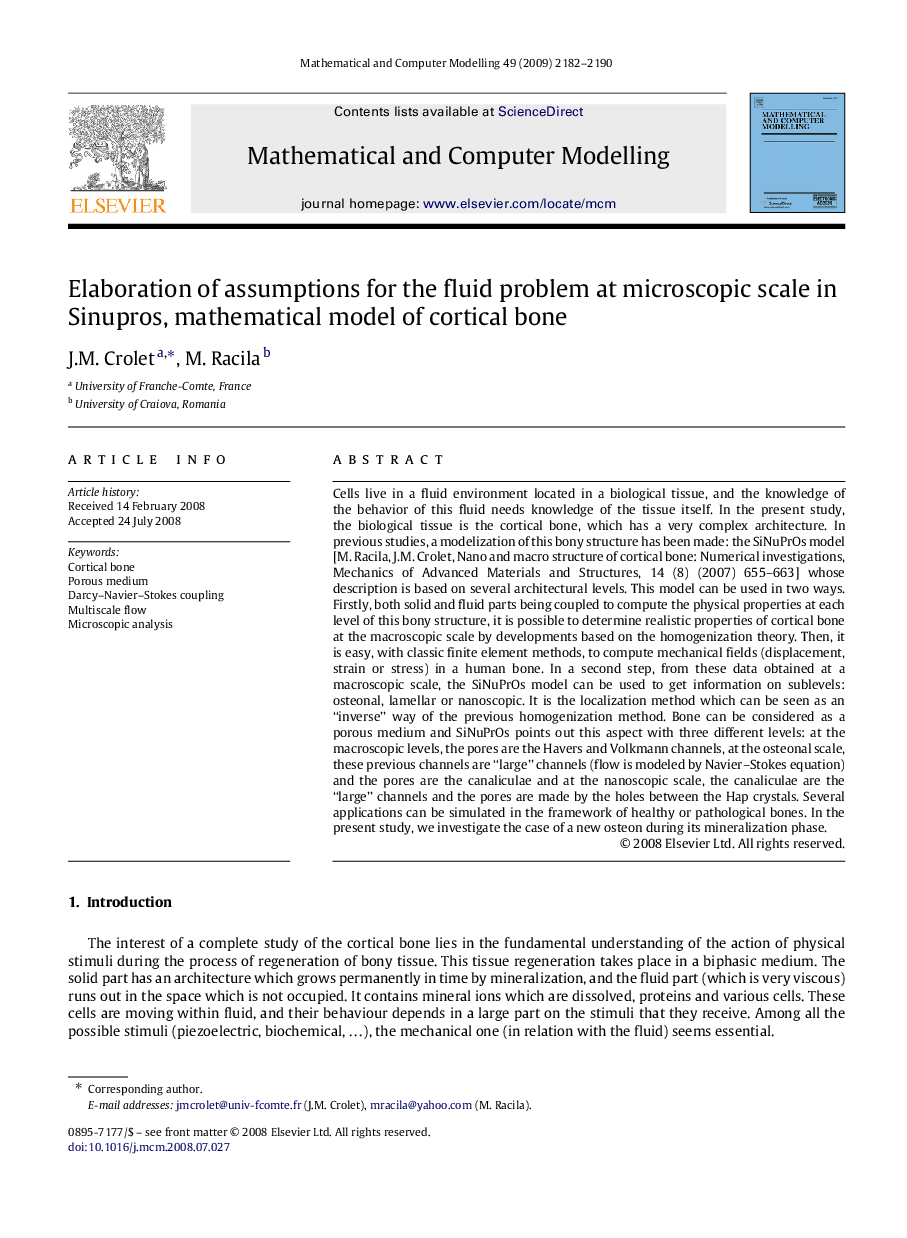| کد مقاله | کد نشریه | سال انتشار | مقاله انگلیسی | نسخه تمام متن |
|---|---|---|---|---|
| 1137530 | 1489181 | 2009 | 9 صفحه PDF | دانلود رایگان |

Cells live in a fluid environment located in a biological tissue, and the knowledge of the behavior of this fluid needs knowledge of the tissue itself. In the present study, the biological tissue is the cortical bone, which has a very complex architecture. In previous studies, a modelization of this bony structure has been made: the SiNuPrOs model [M. Racila, J.M. Crolet, Nano and macro structure of cortical bone: Numerical investigations, Mechanics of Advanced Materials and Structures, 14 (8) (2007) 655–663] whose description is based on several architectural levels. This model can be used in two ways. Firstly, both solid and fluid parts being coupled to compute the physical properties at each level of this bony structure, it is possible to determine realistic properties of cortical bone at the macroscopic scale by developments based on the homogenization theory. Then, it is easy, with classic finite element methods, to compute mechanical fields (displacement, strain or stress) in a human bone. In a second step, from these data obtained at a macroscopic scale, the SiNuPrOs model can be used to get information on sublevels: osteonal, lamellar or nanoscopic. It is the localization method which can be seen as an “inverse” way of the previous homogenization method. Bone can be considered as a porous medium and SiNuPrOs points out this aspect with three different levels: at the macroscopic levels, the pores are the Havers and Volkmann channels, at the osteonal scale, these previous channels are “large” channels (flow is modeled by Navier–Stokes equation) and the pores are the canaliculae and at the nanoscopic scale, the canaliculae are the “large” channels and the pores are made by the holes between the Hap crystals. Several applications can be simulated in the framework of healthy or pathological bones. In the present study, we investigate the case of a new osteon during its mineralization phase.
Journal: Mathematical and Computer Modelling - Volume 49, Issues 11–12, June 2009, Pages 2182–2190